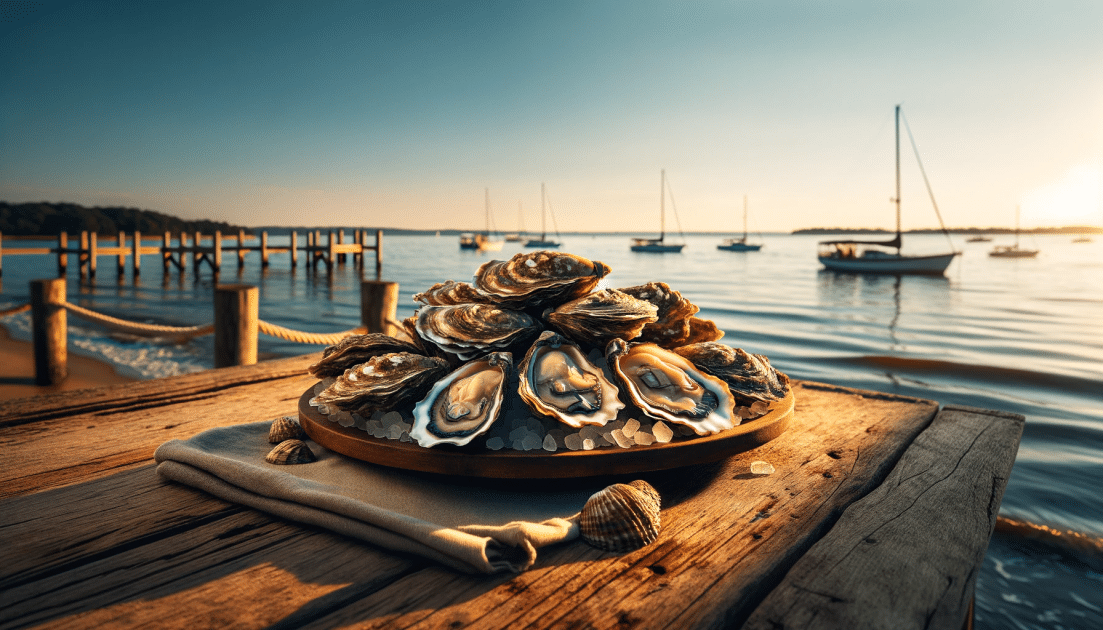Discovering the Allure of Fresh Oysters
Table Of Contents
The Enchanting Experience of Fresh Oysters
Imagine sitting at a serene seaside restaurant, a gentle breeze mingling with the fresh scent of the ocean. Before you lies a platter of glistening fresh oysters, their presence a promise of the unique culinary journey ahead. This scene captures the essence of why fresh oysters have long been cherished as a culinary delight. Beyond just being a food item, they embody an experience – a blend of taste, tradition, and the natural beauty of the seas. From the briny depths of Chesapeake Bay to your plate, each oyster carries a story worth exploring.
Regional Delights: Chesapeake Bay Oysters and More
Oysters have intrigued and delighted palates for centuries. Their unique flavor and texture, which vary remarkably from one region to another, offer a taste experience unlike any other. Chesapeake Bay oysters, for instance, are renowned for their distinct, slightly sweet and buttery flavor, a direct result of the unique mix of fresh and saltwater in their habitat. The allure of fresh oysters extends beyond their taste; it’s about the experience of connection with the sea and its mysteries. Each oyster is a small, encapsulated universe, a product of its environment and a bearer of its secrets.
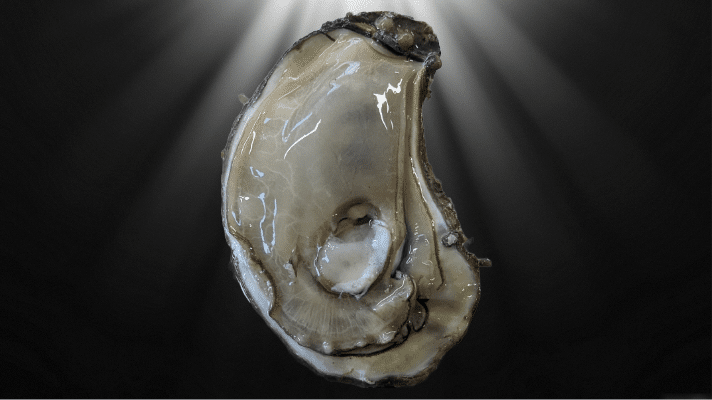
Culinary Versatility: From Raw to Cooked
The appeal of fresh oysters is as much in their preparation and presentation as it is in their consumption. Whether served raw on the half shell, grilled, or steamed, each preparation method highlights different aspects of their flavor and texture. Oysters served raw, particularly those enjoyed in the shell, offer a pure, unadulterated taste of the sea, a briny, refreshing flavor that is both invigorating and soothing. On the other hand, cooked oysters, such as those grilled with a hint of garlic and herbs, present a completely different profile, one that is richer and more robust. This versatility is part of what makes oysters so captivating; they are not just a dish but a canvas for culinary artistry.
The Sensory Journey of Eating Fresh Oysters
A Feast for the Senses: Sight, Smell, and Taste
The experience of eating fresh oysters begins with the senses. The sight of oysters, neatly presented in the shell, is a visual treat. As you pick up a half-shell, you’re greeted with the fresh, salty aroma, reminiscent of the sea. The first bite is a revelation – a burst of the ocean’s flavor, complex yet comforting. The texture varies from one type of oyster to another; some are smooth and creamy, while others like the renowned Chesapeake oysters offer a meatier bite. The experience is not just about taste; it’s about the moment of connection with the sea and its bounties.
Diverse Flavors: Exploring Different Types
Every type of oyster offers a unique sensory experience. Chesapeake Bay oysters, for example, are known for their large, plump bodies and a balanced mix of sweetness and brininess, reflecting the rich waters where they thrive. Pacific oysters, in contrast, are often more robust in flavor, with a pronounced cucumber or melon finish. Then there are the beloved Kumamoto oysters, small and deep-cupped, known for their sweet, almost fruity taste. The variety is staggering, and part of the joy is in exploring these diverse flavors and textures, each telling a story of its origin.
Texture and Consumption: A Multisensory Experience
When it comes to the texture, oysters can range from delicate and silky to firm and chewy. This textural variety adds another layer to the oyster-tasting experience. Shucked oysters, served fresh and raw, retain the soft and delicate texture, which is highly prized by connoisseurs. The method of consumption also plays a role in the sensory journey. Whether slurped directly from the shell or enjoyed on a small fork, the method can alter the experience, offering different nuances of flavor and texture. This interactive aspect of eating oysters – the shucking, the choosing, the method of consumption – makes it not just a meal, but an engaging, multisensory activity.
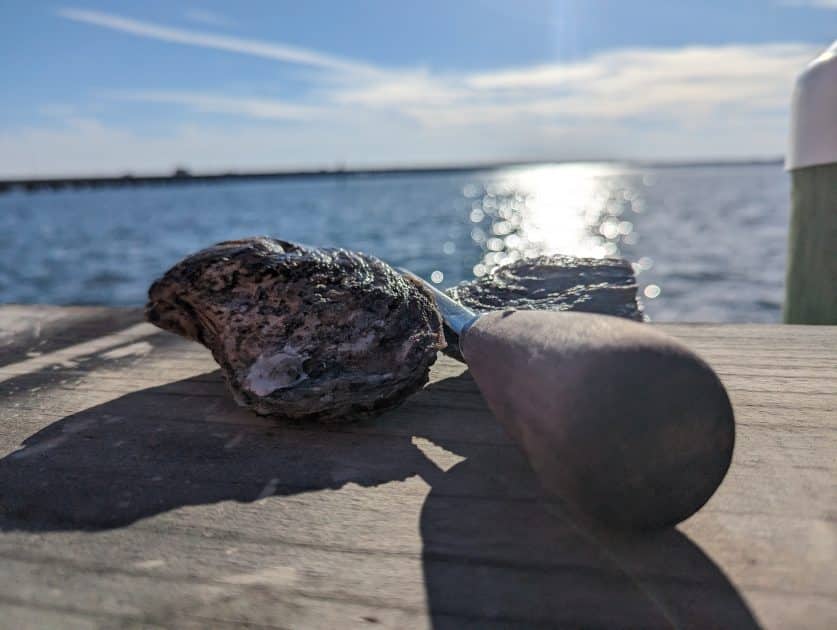
The Art of Oyster Shucking and Consumption
The Ritual of Shucking: Technique and Tradition
Oyster shucking, the art of opening their shells, is as much a part of the allure as the taste itself. This skillful process, enjoyed by many aficionados, reveals the oyster’s hidden treasures.
Diverse Ways to Savor Fresh Oysters
Once opened, oysters offer a world of culinary choices. Whether relished raw for their pure flavor or enjoyed lightly steamed or grilled to enhance their natural sweetness, each method provides a distinct taste experience. From the famed Chesapeake Bay oysters to those enjoyed straight from the shell, every oyster promises a memorable culinary journey.
Personalizing the Oyster Experience: Various Methods of Enjoying
Shucking requires skill and finesse, and for many, it’s a ritual steeped in tradition. The right tools – a specialized oyster knife and a sturdy glove – are essential for safely and effectively opening the shells. The process involves finding the hinge of the oyster and carefully inserting the knife, twisting it to pop the shell open. It’s a moment filled with anticipation, as each oyster reveals its unique size, shape, and color. The beauty of a freshly shucked oyster lies in its pristine condition, untouched and ready to be savored.
From Raw to Rockefeller: Cooking Styles and Flavors
The method of consuming oysters also varies widely and is a matter of personal preference. Raw oysters are often served with a variety of condiments – lemon wedges, cocktail sauce, horseradish, or mignonette sauce – allowing each person to customize their experience. Others prefer the simplicity of tasting the oyster without any additions, focusing solely on the natural flavors. For those who prefer cooked oysters, options abound, from classic Rockefeller style – baked with a rich topping of butter, herbs, and breadcrumbs – to barbecued or smoked varieties, each method bringing out different aspects of the oyster’s flavor profile. This versatility in preparation and consumption underscores the oyster’s status as a culinary chameleon, adaptable to a myriad of tastes and preferences.
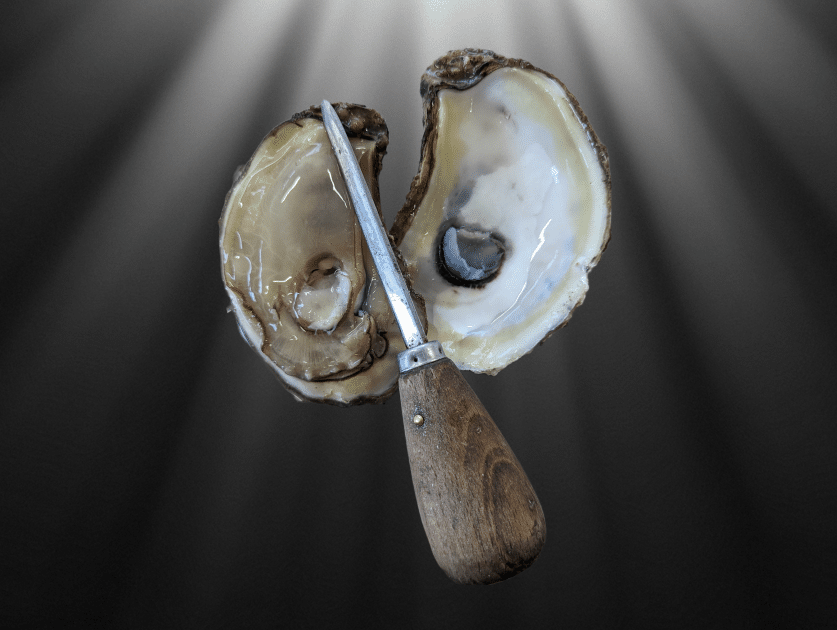
Perfect Pairings: Enhancing the Flavor of Fresh Oysters
Classic Beverage Pairings for Every Oyster Type
The experience of savoring fresh oysters is elevated to new heights when paired with the perfect beverage. A classic choice for many oyster enthusiasts is a glass of chilled champagne or a crisp white wine, which complements the oyster’s natural saltiness with its effervescence and acidity. This pairing is not just about taste; it’s about enhancing the overall oyster experience, creating a harmonious blend of flavors that delights the palate.
When considering pairings, the type of oyster plays a crucial role. Chesapeake Bay oysters, with their distinct, slightly sweet and buttery flavor, pair beautifully with light, acidic beverages that cut through their richness. A bright Sauvignon Blanc or a sparkling Prosecco can accentuate the subtle sweetness and brininess of these oysters. On the other hand, Pacific oysters, known for their more pronounced cucumber or melon finish, might pair well with a dry Rosé or a light Pilsner, balancing their robust flavor.
Non-Alcoholic Options: Enhancing Flavors Naturally
For those who prefer a non-alcoholic option, a squeeze of lemon or a dash of mignonette sauce – a simple concoction of vinegar, shallots, and pepper – can add a delightful tanginess that complements the fresh oyster’s taste. Experimenting with different pairings can be as enjoyable as the oysters themselves, offering a chance to explore how various flavors interact and bring out different aspects of the oysters.
Setting the Scene: Ambiance and Enjoyment
The art of pairing is also about the ambiance and setting. Enjoying fresh oysters and a suitable beverage on a sunlit patio, at an elegant dining table, or even at a casual beachside setting, each creates a different sensory experience. The environment, the company, and the occasion all contribute to the enjoyment of fresh oysters. It’s these moments – a toast with a glass of champagne, a shared platter of oysters, the laughter and conversation that ensues – that transform a simple meal into a memorable culinary adventure.
List of Recommended Beverage Pairings:
- Chesapeake Bay Oysters: Pair with light, acidic white wines like Sauvignon Blanc or sparkling Prosecco.
- Pacific Oysters: Complement with dry Rosé or a light Pilsner.
- Olympia Oysters: Ideal with delicate white wines or non-alcoholic sparkling water with a lemon twist.
- Non-Alcoholic Options: Lemon squeeze, mignonette sauce, or a dash of hot sauce.
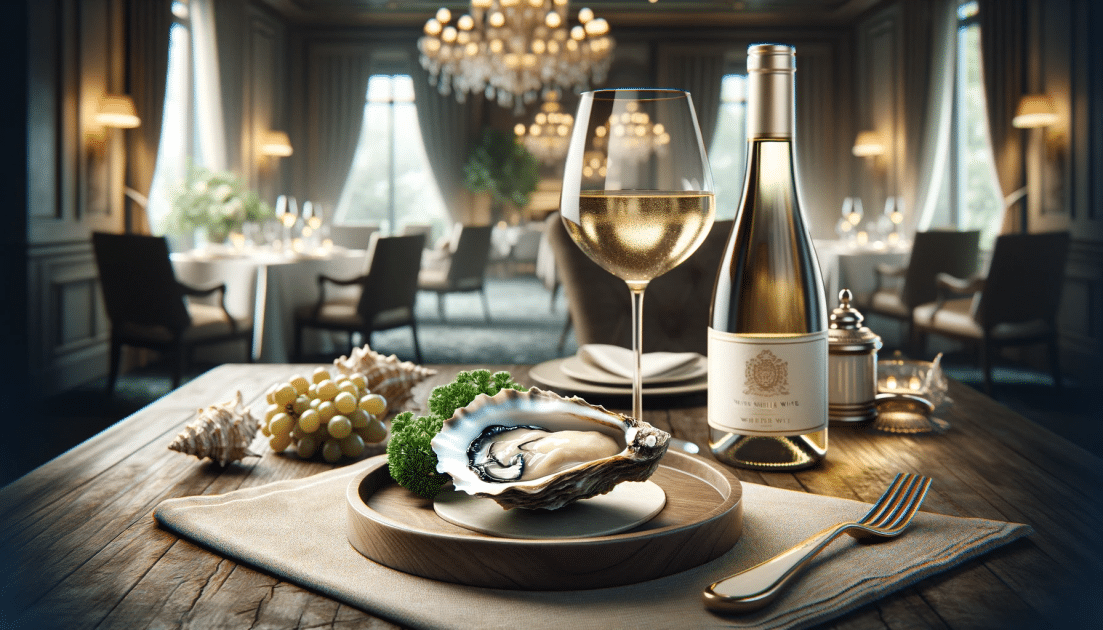
A Social and Cultural Delicacy: Oysters as a Gathering Point
Oysters in Social Settings: More Than Just Food
Oysters have long been more than just a food item; they are a symbol of social connection and cultural heritage. Across the world, oyster bars, festivals, and gatherings centered around these shucked delicacies are common, drawing enthusiasts and newcomers alike to share in the joy of oyster consumption. In these settings, oysters become a focal point for social interaction, a shared interest that brings people together.
Cultural Significance: Traditions and Celebrations
The communal aspect of eating oysters is evident in the way they are often served – on a large platter, meant for sharing, encouraging a collective dining experience. Oysters prompt conversation and engagement, making them ideal for social gatherings, parties, and celebrations. Whether it’s a casual get-together or a formal event, the presence of a tray of fresh oysters in the shell instantly elevates the occasion.
Moreover, oysters hold a significant place in many cultural traditions. In some regions, they are synonymous with luxury and sophistication, often reserved for special occasions. The ritual of shucking, the choice of condiments, and the manner of consumption vary from culture to culture, adding to the rich tapestry of oyster traditions. Chesapeake Bay oysters, for instance, are not just a culinary delight but also a part of the cultural identity of the region, celebrated in local festivals and community events.
Connecting Through Cuisine: The Communal Aspect of Oysters
The social and cultural dimensions of oyster consumption extend beyond mere eating. They encompass the stories of the regions where they are harvested, the methods of preparation passed down through generations, and the shared experiences of those who gather to enjoy them. Oysters, thus, are a testament to the idea that food can be a powerful connector, bringing people together and creating bonds over shared tastes and experiences.
Checklist for Hosting an Oyster Gathering:
- Select a Variety of Oysters: Include a mix of Chesapeake Bay, Pacific, and Olympia oysters.
- Essential Tools: Oyster knives, gloves, and serving platters.
- Accompaniments: Lemon wedges, cocktail sauce, and mignonette.
- Beverage Pairings: A selection of wines and non-alcoholic options to suit all tastes.
- Decorative Touches: Nautical-themed décor to enhance the ambiance.
Exploring the Rich Variety: Chesapeake Oysters and Beyond
A World of Oysters: From Chesapeake Bay to the Pacific
The world of oysters offers an astonishing variety, with each type bringing its unique flavor profile and texture. Among the most celebrated are Chesapeake oysters, known for their ideal balance of sweetness and saltiness, a testament to the rich, nutrient-filled waters of the Chesapeake Bay. These oysters are not just a culinary treat but also a symbol of the region’s aquatic heritage.
Taste the Difference: Unique Varieties and Their Characteristics
Each variety of oyster, from the large and meaty Pacific oysters to the smaller, more delicate Olympia oysters, tells a story of its origin. Pacific oysters, for instance, are known for their robust and briny flavor, often reflecting the colder, nutrient-rich waters they come from. Olympia oysters, on the other hand, are prized for their sweet and slightly metallic taste, a rarity that makes them highly sought after.
The diversity extends to how these oysters are enjoyed. Some, like the Pacific oysters, are often preferred cooked due to their larger size and stronger flavor, making them ideal for grilling or baking. Others, such as the petite Kumamoto oysters, are best savored raw, allowing their subtle sweetness and creamy texture to shine. This versatility makes oysters a fascinating subject for culinary exploration, inviting connoisseurs and casual diners alike to discover their preferred type and preparation method.
An Oyster for Every Palate: Cooking and Tasting Different Types
For those new to oysters, the journey can begin with the more accessible varieties, like Chesapeake oysters, which are often appreciated for their balanced flavor profile. As one’s palate becomes more accustomed to the taste of oysters, experimenting with different types, such as oysters in the shell or shucked oysters, becomes an adventure in itself. Each type of oyster, with its distinct taste and texture, offers a new experience, a new flavor to explore, and a new story to tell.
Guide to Popular Oyster Varieties:
- Chesapeake Bay Oysters: Known for a sweet, buttery flavor with a hint of salt.
- Pacific Oysters: Larger in size, with a pronounced briny and cucumber finish.
- Olympia Oysters: Small and prized for their sweet, nutty flavor.
- Kumamoto Oysters: Deep-cupped with a mild, sweet taste.
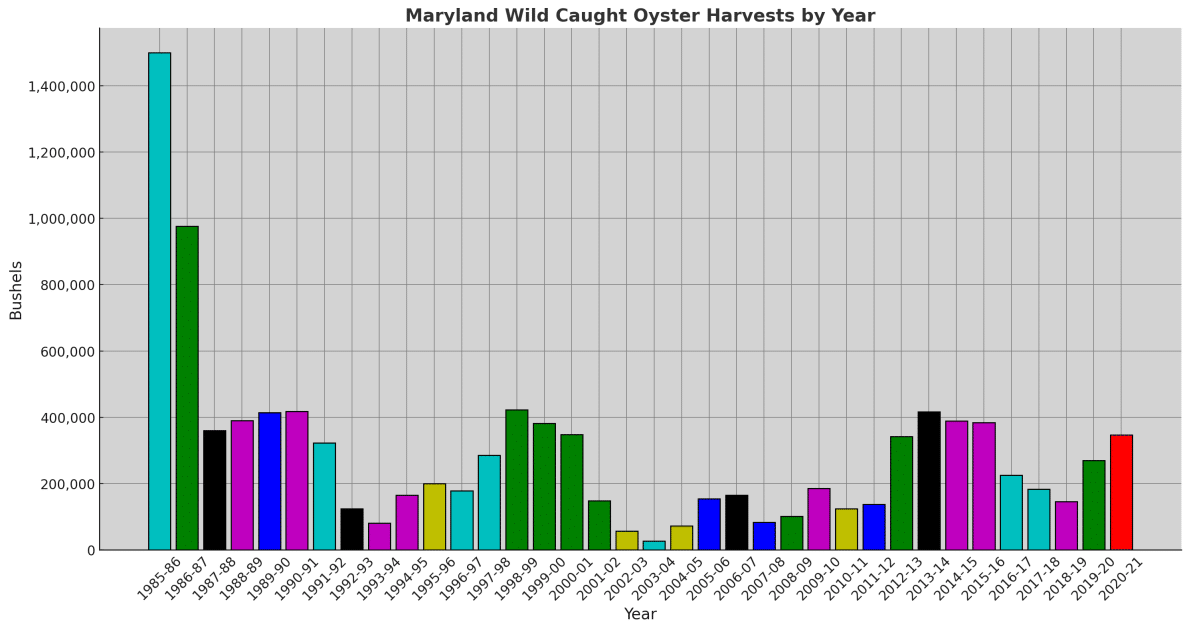
References
- “Microbiomes of an oyster are shaped by metabolism and environment” from Nature: A study exploring the relationship between oyster microbiomes and their metabolism, with implications for oyster health and the oyster industry. Read more on Nature.
- “Researchers Investigate Innovative Way to Plant Oysters for Restoration” from NOAA Fisheries: Discusses innovative methods for oyster restoration, particularly in the Chesapeake Bay. Read more on NOAA Fisheries.
- “10 Wonderful Benefits of Oysters” from Organic Facts: An article detailing various health benefits of oysters, including their nutritional value and tips on consumption. Read more on Organic Facts.
- “Oysters: Are They Good for You?” from WebMD: Provides nutritional information about oysters, emphasizing their health benefits. Read more on WebMD.
- “Oysters: Nutrition, Risks, and How to Cook Them” from Healthline: Offers a comprehensive overview of the nutritional content of oysters, their health benefits, risks, and cooking methods. Read more on Healthline.
These references offer a range of perspectives on the nutritional and health aspects of oysters, as well as insights into their environmental impact and restoration efforts.
Be sure to check out a few of our other informative posts about crabs!
Chesapeake Charm: The Story of Maryland Crabs and Their Cultural Legacy

